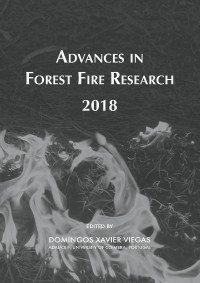Please use this identifier to cite or link to this item:
https://hdl.handle.net/10316.2/44521| DC Field | Value | Language |
|---|---|---|
| dc.contributor.author | Manta, Maria I. | |
| dc.contributor.author | Kometter, Roberto | |
| dc.contributor.author | Navia, Alexis | |
| dc.date.accessioned | 2018-11-09T11:09:39Z | |
| dc.date.accessioned | 2020-09-06T17:31:23Z | - |
| dc.date.available | 2018-11-09T11:09:39Z | |
| dc.date.available | 2020-09-06T17:31:23Z | - |
| dc.date.issued | 2018 | - |
| dc.identifier.isbn | 978-989-26-16-506 (PDF) | |
| dc.identifier.uri | https://hdl.handle.net/10316.2/44521 | - |
| dc.description.abstract | Recent events of extreme wildfires are occurring in different parts of the world. In Peru, climate of fire has also occurred and has caused material and environmental services losses. The population and the ecosystems from the Peruvian Andes have been directly affected by the fire and a greater reduction in the water supply could affect 95% of the Peruvian population. Taking into account that there are limitations to estimate the fire danger index and aware the population about wildfire occurrences, here wildfire statistics were used to analyze its spatial and temporal trends from 1973 to 2014 and map fire danger for the Peruvian Andes. Wildfires are spread in all departments of the Peruvian highlands (18) and their fire season length has increased from 4 to 12 months in a year: August, September and October are months with the highest occurrence of wildfire, currently. Four departments of the Southern Andes have a very high fire danger class; while two departments of the Northern Andes have a high fire danger class. In these six departments, the total area burned in 42 years has been 201278 ha (93% of the total burned area). The ecosystems most affected by the fire were grassland (the Puna, the Páramo and Peatlands), natural forests (Dry Forest in Inter-Andean valleys, Dry Mountain Forest and Tropical Montane Cloud forests) and the Andean shrubs. If the government organizations do not prioritize the implementation of strategies to reduce and adapt to wildfires and its occurrence continues, the severity of the fire could intensify on the Andean natural vegetation and its role in climate and hydrological cycle regulation may change dramatically, affecting the socioeconomic development and the welfare of the population. | eng |
| dc.language.iso | eng | - |
| dc.publisher | Imprensa da Universidade de Coimbra | por |
| dc.relation.ispartof | http://hdl.handle.net/10316.2/44517 | por |
| dc.rights | open access | - |
| dc.subject | Fire danger map | eng |
| dc.subject | spatial and temporal distribution | eng |
| dc.subject | material and environmental losses | eng |
| dc.subject | disasters | eng |
| dc.subject | Peru | eng |
| dc.title | Evaluation of wildfire danger in the Peruvian Andes: first step for its reduction and adaptation | por |
| dc.type | bookPart | por |
| uc.publication.firstPage | 44 | - |
| uc.publication.lastPage | 56 | - |
| uc.publication.location | Coimbra | por |
| dc.identifier.doi | 10.14195/978-989-26-16-506_4 | - |
| uc.publication.section | Chapter 1 - Fire Risk Management | por |
| uc.publication.digCollection | PB | por |
| uc.publication.orderno | 4 | - |
| uc.publication.area | Ciências da Engenharia e Tecnologias | por |
| uc.publication.bookTitle | Advances in forest fire research 2018 | - |
| uc.publication.manifest | https://dl.uc.pt/json/iiif/10316.2/44521/204099/manifest?manifest=/json/iiif/10316.2/44521/204099/manifest | - |
| uc.publication.thumbnail | https://dl.uc.pt/retrieve/11057858 | - |
| uc.publication.parentItemId | 55072 | - |
| uc.itemId | 68819 | - |
| item.grantfulltext | open | - |
| item.fulltext | With Fulltext | - |
| Appears in Collections: | Advances in forest fire research 2018 | |
Files in This Item:
| File | Description | Size | Format | |
|---|---|---|---|---|
| evaluation_of_wildfire_danger_in_the_peruvian_andes.pdf | 911.11 kB | Adobe PDF |  |
Items in DSpace are protected by copyright, with all rights reserved, unless otherwise indicated.
